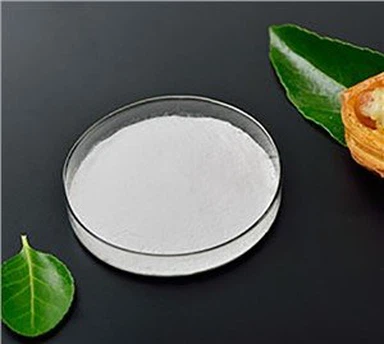What are the commonly used bread emulsifiers?
Feb 06, 2023
Bread emulsifiers are ingredients used in bread baking to improve the texture, volume, and overall quality of the final product. Some commonly used bread emulsifiers include:
1. Lecithin: Lecithin is a naturally occurring emulsifier found in egg yolks, soybeans, and other sources. It helps improve dough handling, texture, and shelf life.
2. Monoglycerides and Diglycerides: These are synthetic emulsifiers commonly used in commercial bread production. They help improve dough handling, increase bread volume, and improve crumb structure.
3. DATEM (Diacetyl Tartrate of Monoglycerides): DATEM is a synthetic emulsifier commonly used in bread baking to improve the elasticity and handling characteristics of dough. It also helps improve the volume and texture of the bread. It offers several advantages for bread production, including:
Improved dough handling: DATEM helps to improve the dough handling characteristics of bread dough. It reduces stickiness and makes the dough easier to handle, which is especially useful in large-scale commercial bread production.
Building volume: DATEM can help add volume to bread by improving the gas retention properties of the dough. This results in a lighter, fluffier loaf with a more open crumb structure.
Better shelf life: DATEM can help extend the shelf life of bread by improving the overall quality and freshness of the product. It can help prevent staling, which is the process by which bread becomes dry and hard over time.

Improved texture: DATEM can help improve the texture of bread by creating a finer crumb structure and a more uniform texture throughout the bread.
Cost-effective: Compared to other emulsifiers, DATEM is a relatively cost-effective option for bread producers. This is especially important in large-scale commercial bread production, where even small cost savings add up over time.
DATEM is a versatile and effective emulsifier that offers several advantages in bread production including improved dough handling, increased volume, extended shelf life, improved texture, and cost-effectiveness.
4. CSL (calcium stearoyl lactylate): CSL is a synthetic emulsifier commonly used in bread production. It helps improve dough handling, increases bread volume, and improves crumb structure.
5. Sodium stearoyl lactylate (SSL): SSL is a synthetic emulsifier commonly used in bread making. It helps improve dough handling, increases bread volume, and improves crumb structure.
6. Glyceryl Monostearate (GMS): GMS is a synthetic emulsifier commonly used in bread production. It helps improve dough handling, increases bread volume, and improves crumb structure.
It's worth noting that some bakers prefer to avoid synthetic emulsifiers and instead use natural alternatives, such as lecithin from egg yolks or soy, or even vinegar or honey, which help improve the texture and quality of bread dough.
You Might Also Like
-

Lactic Acid Esters of Mono-and Diglycerides CAS NO. 1006-...
-

Monosodium Glutamate CAS NO. 142-47-2 CAS NO.: 32221-81-1
-

Disodium Phosphate CAS NO. 7558-79-4
-

Sodium Hexametaphosphate CAS NO. 10124-56-8
-

Dicalcium Phosphate CAS No.7757-93-9, CAS No.7789-77-7
-

Food Additives DMG Powder/GMS High Purity Over 90% E471 C...
